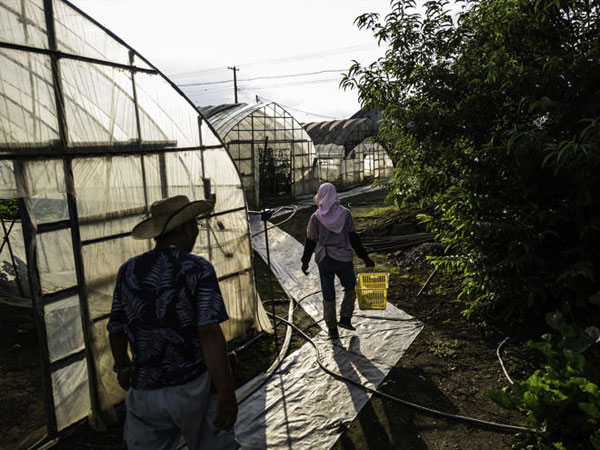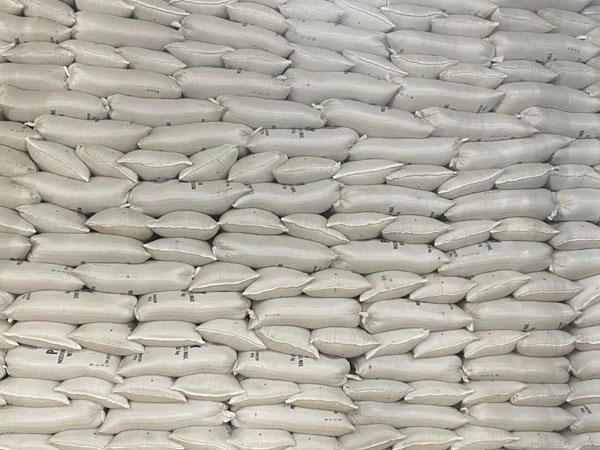 ASAHIKAWA, Japan — Nobuo Kubo inherited his rice farm four decades ago, becoming the third generation in his family to look after the lush fields at the base of Mount Daisetsu. The pristine snowmelt has made this region in Hokkaido prefecture one of Japan’s leading rice producers.
ASAHIKAWA, Japan — Nobuo Kubo inherited his rice farm four decades ago, becoming the third generation in his family to look after the lush fields at the base of Mount Daisetsu. The pristine snowmelt has made this region in Hokkaido prefecture one of Japan’s leading rice producers.
But Kubo, now 72, has no intention of passing down the farm to his children.
He is part of a generation of aging farmers fed up with what they describe as the government’s unreliable policy decisions that are making farming an increasingly unsustainable way of life here.
“It’s sloppy,” Kubo said. “The government only does stopgap measures, nothing long-term.”
The frustration among farmers like Kubo has mounted over the past year as rice prices doubled and the government mismanaged the highly regulated supply of rice.
The ensuing political crisis was a key factor in the Liberal Democratic Party’s humiliating defeat in crucial elections in July, and in Prime Minister Shigeru Ishiba’s subsequent resignation last month. Rice was also a major sticking point in trade negotiations with the Trump administration as Tokyo resisted efforts to increase U.S. rice imports, which could edge out local farmers.
The LDP will elect a new leader this Saturday — that person will almost certainly become Japan’s new prime minister — and the soaring cost of living is a top issue. Skyrocketing rice prices have reshaped daily life in Japan, leading families to switch up their diet and some restaurants to even fine customers who don’t finish their rice.
One of the front-runners is Agriculture Minister Shinjiro Koizumi, whose predecessor resigned after saying he “never had to buy rice” because he was given it — a comment many Japanese saw as out of touch with the economic realities families were facing.
Government involvement in regulating Japan’s rice market is different than the grain industry in the United States. The central and local governments closely manage the grain with help from farming cooperatives, which provide everything from fertilizers to loans that help small-scale farmers, who make up the majority of the industry, survive. The regulators set production guidelines that influence rice prices, and cooperatives help implement government policies.
Koizumi and other policymakers have announced an overhaul of the way the government regulates rice production. But critics are skeptical, given that powerful agricultural cooperatives have resisted previous attempts at reform and have enormous sway over the LDP.
Rice is central to Japanese cuisine but consumption has steadily dropped since the 1960s, as the population has shrunk and people have branched out to other carbs like bread and pasta. As a result, the government has lowered production targets and handed out subsidies for planting other crops.
This policy was meant to prevent oversupply and dramatic price swings, experts say.
But last year, a perfect storm of events caused chaos in the market: There was a poor-quality harvest, an influx of tourists and panic buying amid fears that a massive earthquake would hit Japan.
Rice disappeared from grocery store shelves, and what was left cost twice as much. The government then had to tap into its emergency reserves, the rice equivalent of the United States’ strategic oil reserve.
This was exasperating to farmers like Kubo, who say they could have produced more rice had it not been for the government’s miscalculations. Kubo has left 30 percent of his farmland unused because of production guidelines.
During Koizumi’s visit to Hokkaido in May, Kubo and two other farmers pleaded for a change.
“I told him, ‘Come to the field. Make policies while actually looking at the situation on the ground. Otherwise, you won’t understand the reality,’” Kubo said. “He said he understood, but he hasn’t come at all.”
Still, Koizumi appears to have gotten the message. In August, the government announced a major policy shift: It will revise its decades-old policy of limiting rice production, and encourage larger harvests instead. The government had been forecasting annual demand, which had acted as a de facto cap on production. To prevent a surplus, it will allocate more rice for exports, which can be redirected to the domestic market in the event of another shortage.
Koizumi declined a request for an interview.
Anxiety over the future of family farms
The government’s plans to encourage farmers to produce more remain vague, and that uncertainty has made many farmers anxious.
The industry already faces existential challenges: Farmers are growing older, and younger generations are finding more lucrative jobs in cities. More than 1 million acres remain unused as farmers retire without successors.
But change is already happening in pockets of the industry. Take Hiroaki Kawazoe, 39, a rare millennial who happily inherited his family farm in Asahikawa in his mid-20s.
“I thought it would be a waste to let all my parents’ hard work disappear,” Kawazoe said, as he shared a juicy homegrown watermelon with his parents and daughter.
He created a sleek website to market his products. He uses drones to keep track of his yield and sells directly to restaurants rather than going through the cooperatives that help the government keep tabs on rice sales.
Still, the family wonders what the future holds for their industry, from tariff negotiations to new government policies.
“Who knows what will happen from now on?” said his mother, Katsuko Kawazoe, 71. “We’re anxious whether we can manage.”
Under the trade agreement, Tokyo agreed to accept more rice tariff-free from the United States, and earlier this year, retailers took the unusual step of turning to imports from California and South Korea as cheaper alternatives to locally grown rice.
Shoppers, who strongly prefer domestic rice over imports, say they are desperate for a government solution that both makes rice more affordable and protects farmers.
“With the number of rice farmers decreasing, I hope some kind of measures will be taken, though I don’t know what,” said Kozue Niiya, 47, out shopping on a recent afternoon. “But I do wish daily food items, like rice, would be cheaper.”
The politics of the farm vote
The LDP’s previous efforts to reform the rice industry lost steam, experts say, in part because of relentless pushback from the Japanese Agricultural Cooperatives, known as the JA Group, an influential national federation of local associations representing farmers that has a powerful lobbying arm. The group can also turn out the farm vote in rural areas, which carry more weight than urban areas because of electoral redistricting.
The Agriculture Ministry said its policies are not intended to benefit a particular interest group.
The central office of the JA declined requests for an interview but Toru Yamano, who heads its lobbying arm, said in a news conference last month that the organization wants to see policies that are sufficiently funded and promote the future of the agricultural industry.
Thanks to the JA’s reach in every prefecture, farmers have been key to keeping the LDP in power for almost all of the past 70 years, said Patricia Maclachlan, a professor of Japanese politics and political economy at the University of Texas at Austin and an expert in the Japanese farming industry.
The JA “would mobilize the farm vote behind the LDP” and in return, the LDP would protect the agricultural industry, Maclachlan said.
One of those protections was the government’s production limit, experts say. By keeping rice prices high, the limit helps part-time rice farmers running small plots of land stay employed.
The small size of these farms are a remnant of Japan’s rapid postwar economic growth, said Kimio Inagaki, agriculture policy expert at the Mitsubishi Research Institute in Tokyo, as people who began working in manufacturing jobs kept farming on the side to feed their families.
Even today, some of the fields are so small that farmers grow just enough rice to feed their own family. But they remain economically viable thanks to the JA’s help.
“Farming is a job that requires helping each other. Simply put, without the JA, we would be in trouble,” said Shinichi Matsumoto, 76, who runs a four-acre farm part-time in Saitama, northwest of Tokyo.
Matsumoto worries part-time farmers will leave the industry if production increases too much and rice prices plummet. He said he hopes the new system will find the right balance for small and large farms, as well as for consumers, given the importance of rice to Japan.
“Rice is a staple food,” Matsumoto said. “Food is the source of life. Is there anything more important than that?”














© Copyright 2025 The SSResource Media.
All rights reserved.